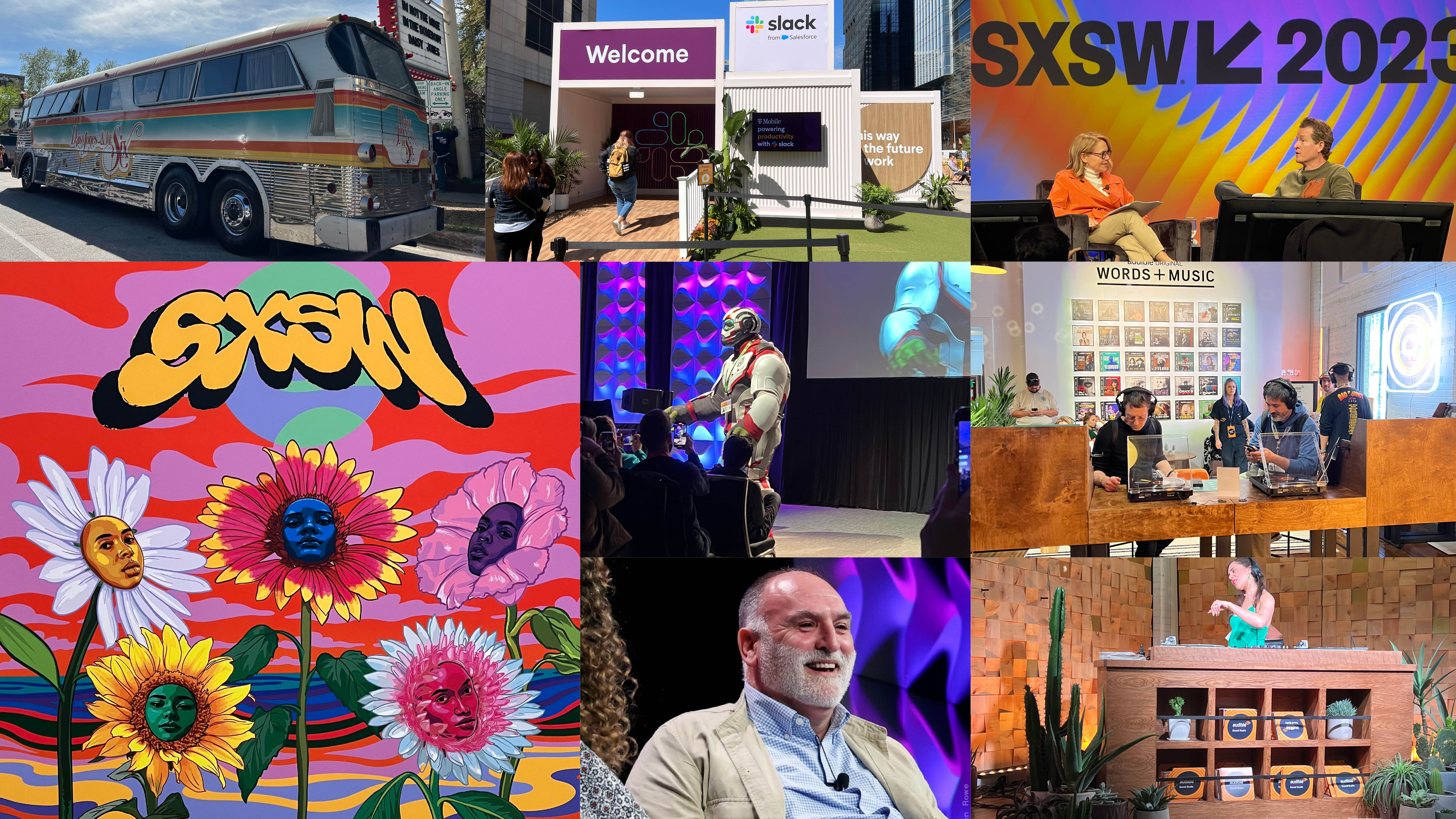Published by
Another year of SXSW in Austin is in the books.
For roughly two weeks each year, the city of Austin oozes energy, creativity, and innovation. Each of these can be felt through several avenues like tech, film, music, brand activations, breakfast tacos, Transformers on 6th street, and so much more. It is always next to impossible to think back on a jam-packed week of so many amazing sights and sounds and try to recall every impactful stat or data visualization that I saw, but there are always a handful that rise to the top. And this year was no different.
While it was very difficult to narrow down, there were three major trends that I noted throughout the week. Each of these trends was mentioned multiple times in various lights and in various environments, and each holds an interesting insight that should be embraced by more brands as the benefits are becoming more evident. All that being said let’s dive in.
The Impact of AI on our Future
As you can imagine topics like the rise of ChatGPT, assistive computing, and the role of AI, were present as they are in most years. But this year felt different. We are turning the corner to see what assistive computing could mean for our society and the ways we live in scenarios I had not heard about before. There is a common joke about AI stealing our jobs, but I think it is becoming less about that and more about us needing to navigate how it can make us more productive with our work.
The speed at which AI can complete tasks in a couple of minutes or seconds that would normally take a human a few hours is jarring. However, as it exists today, AI still requires a fair level of human involvement to ensure it has things correct to the level a human would. If we can lean into this and turn to AI for more of our administrative tasks, compiling information, keeping track of emails, etc. then we will open more bandwidth for human brain power to do what it does best. Letting AI in where it makes sense without it owning every step of a process will have to be the happy medium we find.
More interestingly, Amy Webb, of the Future Today Institute, described a large divide that will likely happen in our workforce and as our children enter the workforce if we do not embrace the reality that these technologies are here to stay and try to learn how to work with them. She shared, “Being able to use assistive computing tech will be like being born rich.” As we continue our careers, and our children learn skills needed for adulthood, we will see those skill sets need to change. We will need to equip ourselves and our children with the tools needed to work alongside these technologies or we will most certainly be edged out.
Amy argued that the worker who leans in and learns how to leverage AI in their career will be vastly more valuable in the future than the worker who does not. So again, the emphasis was less about losing our jobs to AI or robots and more about needing to leverage AI to become even more of an asset in our craft. There will be a high demand for workers who are comfortable with assistive computing as we try to keep the human element engaged all while becoming more productive. It begs the question of what skills our education systems may need to pivot to and by when.
TikTok Is Changing the Traditional Customer Journey
The second key takeaway is the way that social media, more specifically TikTok, has shifted the way we research and purchase products. Customer word of mouth (WOM) has more weight than it ever has before. Years ago, WOM was just that. Verbally sharing an experience with a friend or a handful of friends or family members. Today, consumers have a larger megaphone and much wider audience to share their good and bad experiences with brands, and many people rely heavily on feedback from peers and/or consumer reviews when making a purchase decision.
While this is not necessarily anything new, experiences like TikTok are taking it a step further and speeding up the sharing process. Consumers are turning to TikTok and other forms of social media, like Instagram, for product research before making a purchase and looking for information from others to confirm if the purchase is worth the investment. And then post purchase, consumers are giving back to the virtuous cycle by posting about their own personal experience with a product and sharing their perspectives. This spans both the good and the bad, and these comments and reviews can have real repercussions for a brand.
In a discussion on “How TikTok Redefined the Customer Journey,” Rachel Ryan, a Global Research & Insights Manager at TikTok, shared that their users are 2.5x more likely to create a video about their purchase compared to a traditional platform journey. All this to say, consumers are sharing their interactions with brands on a much larger and more frequent scale than before and being very honest with their reviews. They are turning to the vastness of social media for their product research and recommendations, and no longer relying on input from a single friend or source. To capitalize on this change in consumer behavior, brands need to work to understand what this trend could mean for their business and how to best manage their customer interactions. One of the most interesting insights is that this behavior is happening across sectors ranging from entertainment to healthcare to auto. Industries that may not have traditionally leaned into social media are now required to so they can reach their audiences in the way they desire.
Deeper connections for Greater Loyalty
Tim Mapes, Chief Marketing & Communications Officer at Delta, explained it perfectly when he said, “Brands are no longer in the hands of the marketers, they are in the hands of their consumers and their reviews.” While this sounds similar to the previous section, this is actually more about fostering meaningful experiences that provide consumers with a sense of connection, comfort and loyalty. I found this last point to be important because while we have been talking about this in practice for some time, I think it is becoming clear that the brands who have embraced this concept are some of our most well-known and loved brands, and in most cases, is what sets them apart from their competition.
The idea of deeper connections is definitely not new, but I do believe that the ways in which brand achieve this are evolving each and every day. Brands like Unilever, Netflix and Delta are all pushing for that ongoing connection by being more fluid and less traditional. Ideas like the blurring lines between marketing and sales teams underline the fact that brands need to explore this connection with their customers throughout the entire customer journey.
Delta, for example, is fostering this connection through their SkyMiles and Sync programs, but also through active listening in multiple channels. Active listening allows Delta to respond to their customer’s issues on their selected platform (ex. Twitter, Instagram, Tik Tok, etc.) rather than making the customer call into a 1-800 customer service line or seek out assistance in another manner. They are meeting their consumers where they are, with the experiences they desire and ultimately building deeper relationships by doing so. Mapes also shared that Delta wants their customers to truly believe that the brand they are loyal to, is loyal back. This is what I see as a key differentiator between companies that are establishing deep brand loyalty and the ones that are not as customers yearn for meaningful and personalized connections with brands.
As is every year, there was much to learn. I hope you enjoyed these key themes I found to be most present, and also most valuable for brands, to explore as consumer habits continue change daily. I am happy to have had the opportunity to attend on behalf of Bottle Rocket and can’t wait for what we learn next year!




